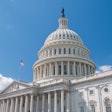Are Medicare patients getting too many repeat diagnostic tests -- including medical imaging scans? A study of nearly 750,000 patients published online November 19 in the Archives of Internal Medicine suggests this is the case.
Researchers from the Dartmouth Institute for Health Policy and Clinical Practice conducted a study to evaluate ordering patterns for eight commonly performed diagnostic tests to determine the likelihood of repeat testing. Most importantly, they wanted to identify how often repeated tests adhered to best-practice guidelines.
To their dismay, the researchers discovered that one-third to one-half of the tests were repeated within three years, despite the fact that repeat testing for these exams is not routinely anticipated. "We were struck by the magnitude of that fraction," said lead author Dr. H. Gilbert Welch.
The tests studied included chest CT, cystoscopy, echocardiography, pulmonary function tests, upper endoscopy, nuclear imaging stress scans, and stress echocardiography exams. These exams are all common and familiar to physicians; however, some uncertainty exists in medical practice about when they should be repeated (Arch Intern Med, November 19, 2012).
Welch and colleagues also examined repeat rates for two other diagnostic tests for which repeat studies are routinely recommended: eye exams and screening mammography. Only the mammography exam, with a median repeat interval of every 13.1 months, adhered to recommended testing interval guidelines.
The study did not analyze the diagnostic information of the patients who had any of these exams. The authors acknowledged at the outset that for a portion of patients, ordering repeat exams was clinically appropriate.
The researchers analyzed data from a 5% random sample of Medicare beneficiaries who had at least one of the tests between January 1, 2004, and December 31, 2006, and who were alive on December 31, 2009. Out of a living population of 936,370 individuals who were enrolled in Medicare from January 1, 2004, through December 31, 2009, 743,478 (79.4%) met the study's inclusion criteria.
Fifty-five percent of patients who had an echocardiography exam had it repeated within three years, Welch and colleagues found. The median interval between tests of 12.1 months suggests that this exam is ordered as a routine annual procedure, in spite of recommendations opposing this level of frequency by the American College of Cardiology Foundation (ACCF) Appropriate Use Criteria Task Force.
In Orlando, FL, 53.8% of beneficiaries had imaging stress tests repeated within a three-year interval, and almost 25% had these exams performed annually. The lowest percentage of repeat studies was in Portland, OR, where 29.8% had imaging exams repeated within three years and 11% had them repeated annually. For both locales and all 48 other metropolitan areas studied individually, such frequency also runs counter to ACCF recommendations.
Data regarding two other exams surprised the research team. One-third of upper endoscopy exams were repeated within three years, which was "considerably higher" than expected, and this was consistent among all 50 geographic locales. While nearly three-fourths of the patients had annual eye exams (the recommended frequency), almost half of the total had a repeat exam within six months.
Disturbing patterns
At a time when federal and state governments are under extreme pressure to deal with the rising costs of Medicare, the patterns of repeat testing found in the study are disturbing. While repeating diagnostic tests is justified for certain patients, there may also be substantial variation in physician testing thresholds throughout the U.S., according to the researchers.
Welch said that he and his colleagues intend to conduct research analyzing individual tests to explore how market factors and the diagnosis at the first examination might affect repeat testing.
"[Repeat testing] has important implications, not only for the capacity to serve new patients and the ability to contain costs, but also for the health of the population," the group wrote. "Although the tests themselves pose little risk, repeat testing is a major risk factor for incidental detection and overdiagnosis."
In an accompanying commentary, Dr. Jerome Kassirer, professor of medicine at Tufts University School of Medicine, and Dr. Arnold Milstein, professor of medicine and director of Stanford University's Clinical Excellence Research Center, agreed with the authors' concerns.
"Our historical resistance to policy medicine strong enough to align U.S. per capita health spending growth with national income growth is already impairing the health of our country," they wrote.
Noting that "scores" of clinical practice guidelines have been developed and several generations of U.S. physicians have been taught clinical reasoning, Kassirer and Milstein suggested that clinical decision-support systems could help. They cited a precertification program for imaging exams put in place at HealthPartners and the results-based clinical pathway program of Intermountain Healthcare. Both rely on electronic guidance systems for physician decision-making.
"To avoid reading an almost identical article about unwarranted geographic variations in these pages 10 years from now, physicians will need to support expansion of peer-designed active electronic clinical guidance systems and faster retirement of fee-for-service incentives," they wrote.
Voluntary or mandatory use of such systems could reduce the lure of financial incentives, the fear of malpractice claims, or the buckling to patient demands in lieu of following clinical guidelines.



















